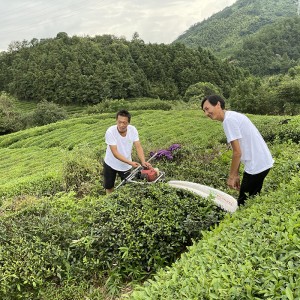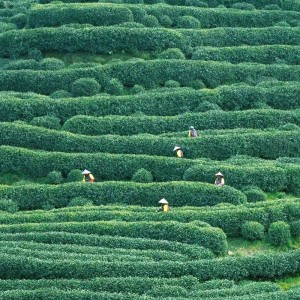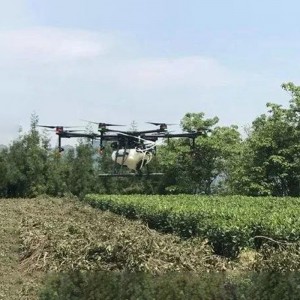After the spring tea is picked continuously by hand and Tea Harvesting Machine, a lot of nutrients in the tree body have been consumed. With the coming of high temperature in summer, tea gardens are overgrown with weeds and pests and diseases. The main task of tea garden management at this stage is to restore the vitality of tea trees. Because the natural conditions such as light, heat and water in summer are the most suitable for the growth of tea trees, the new shoots of tea trees grow vigorously. If the tea garden is neglected or poorly managed, it will easily lead to abnormal growth and physiological functions of tea trees, vigorous reproductive growth, and excessive consumption of nutrients, which will directly affect the yield of summer tea. In the coming year, spring tea will be delayed and less. Therefore, summer tea garden management should do the following work well:
1. Shallow plowing and weeding, topdressing fertilizer
The tea garden soil is trampled by picking in spring, and the soil surface is generally relatively solid, which affects the root system activities of tea trees. At the same time, as the temperature rises and the rainfall increases, the growth of weeds in tea gardens accelerates, and it is easy to breed a large number of diseases and insect pests. Therefore, after the end of spring tea, you should use a rotary tiller to loosen the soil in time. It is recommended to use a brush cutter to cut off the tall weeds on the walls of the tea garden and around them. After the spring tea is harvested, shallow plowing should also be carried out in combination with fertilization, and the depth is generally 10-15 cm. Shallow tillage can destroy capillaries on the surface of the soil, reduce the evaporation of water in the lower layer, not only inhibit the growth of weeds, but also loosen the topsoil, which has the effect of water retention and drought resistance in summer tea gardens.
2. Timely pruning of tea trees
According to the age and vigor of the tea tree, take corresponding pruning measures and use a Tea Pruning Machine to cultivate a tidy and high-yielding crown. Pruning tea trees after spring tea not only has little impact on the tea yield of the year, but also recovers quickly. However, fertilization management must be strengthened after pruning tea trees, otherwise, the effect will be affected.

3. Tea garden pest control
In summer, the new shoots of tea trees grow vigorously, and the management of tea gardens has entered a critical period of pest control. Pest control focuses on preventing tea leafhoppers,Black thorn whitefly, tea looper, tea caterpillar, mites, etc. harm summer and autumn shoots. The prevention and control of diseases and insect pests in tea gardens should implement the policy of “prevention first, comprehensive prevention and control”. In order to ensure that tea is green, safe and pollution-free, use less chemical pesticides when applying pesticides for prevention and control, and advocate the use of Solar type insects trapping machine, and actively promote the application of methods such as trapping, manual killing, and removal.
4. Reasonable picking and keeping
After spring tea is picked, the leaf layer of the tea tree is relatively thin. In summer, more leaves should be kept, and the thickness of the leaf layer should be kept at 15-20 cm. In summer, the temperature is high, there is a lot of rain, the water content of the tea is high, there are relatively more purple buds, and the quality of the tea is poor. , It is suggested that summer tea can not be picked, which can not only increase the nutrient content of the tea tree contents, improve the tea quality of autumn tea, but also reduce the damage of diseases and insect pests, and ensure the quality and safety of tea.
5. Dredge ditches and prevent waterlogging
May-June is the season with a lot of rain, and the rainfall is heavy and concentrated. If there is a lot of water in the tea garden, it will not be conducive to the growth of tea trees. Therefore, regardless of whether the tea garden is flat or sloping, the drainage should be dredged as soon as possible to avoid waterlogging during the flood season.
6. Laying grass in the tea garden to prevent high temperature and drought
After the rainy season ends and before the dry season comes, the tea gardens should be covered with grass before the end of June, and the gaps between the tea rows should be covered with grass, especially for young tea gardens. The amount of grass used per mu is between 1500-2000 kg. The forage is preferably rice straw without grass seeds, no pathogens and insect pests, green manure, bean straw, and mountain grass.
Post time: Jun-14-2023


